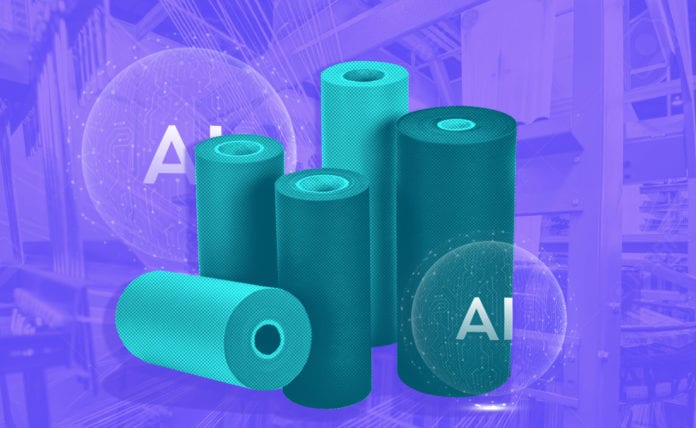The company is a spin-off from Aalto University in Finland and the proprietor of the patented AaltoCell™ technology. The company has created a new plant-based textile fiber – Norratex, which is manufactured without any toxic chemicals or expensive solvents.
“Succeeding so soon came as a big surprise to our entire team.”
R&D Director, Nordic Bioproducts, Ville Nyman.
At the press conference, Nordic Bioproducts is also announcing the launch of a collaboration with CMPC Ventures, the Corporate Venture arm of CMPC S.A, one of the largest producers of pulp in the world.
”We are very excited about this new collaboration. For CMPC, this represents a significant step toward establishing a leading role in the development of the future of biobased industries with global impact.”
Bernardita Araya, Manager CMPC Ventures
Finns at the forefront of the industry
The demand for sustainable and responsible textile fibers is constantly growing. Current methods have a detrimental impact on the environment. Resource-intensive cotton production is already at an extreme, and polyester, in turn, is a major source of microplastic emissions. And, the production of wood-based viscose fiber requires dissolution with toxic carbon disulfide. New and sustainable alternatives from wood and plant-based feedstock are required to address the sustainability challenges of the textile industry. The market for sustainable man-made cellulosic fibers is expected to grow above 10% within the next decade. Competition in the field of new textile fibers is accelerating and the first players in the industry are already commercializing their products and approaching industrial-scale production. Many of these innovations are Finnish, such as Aalto University’s Ioncell fiber, Metsä Spring Oy’s Kuura fiber, Spinnova Oy’s fiber, and Infinited Fibre Company’s Infinna fiber.
The Norratex process
In the Nordic Bioproducts’ method, the cellulose is first hydrolyzed in an environmentally friendly and cost-effective manner, after which the fiber is further processed into a viscose-like textile fiber. The inventor of the AaltoCell ™ method, Professor Olli Dahl at Aalto University, was convinced from an early on that the method, developed by Nordic Bioproducts, could be applied in the production of plant-based textile fibers.
“It’s great to see when your own ideas lead to new products by the skillful team of engineers in a young company. We are embarking on a new era in developing novel biobased products.”
Olli Dahl , Professor, Aalto University
In 2020, Nordic Bioproducts began to develop a cost-effective and scalable textile fiber manufacturing process in collaboration with the University of Tampere, based on Professor Dahl’s idea. Nordic Bioproducts’ team of chemical and fiber processing engineers was able to find just the right parameters for the dissolution that enables wet spinning of the cellulose dope. The Norratex method can utilize a wide variety of raw material sources. Fibers can be made from forest industry by-products, textile waste, and ordinary paper pulp. This is a significant advantage over traditional viscose, which is made from dissolving pulp and the cost can be up to 30 % higher than paper pulp.
The R&D efforts behind Norratex
The first wet spinning experiments with NBG’s cellulose dissolution method were performed in June 2021. Only six months later, in November 2021, yarn was already made from the new Norratex textile fibre at the University of Tampere. Several samples of the yarn were knitted at the Department of Design at Aalto University. Maija Järventausta, a researcher who carried out wet spinning and yarn production in Tampere, describes the success:
“The seventh spinning experiment really surprised me! The dope was excellent and it did not clog the spinneret during wet spinning. At that moment, I suggested that we should try making yarn for the first time. In the next step, the carding was successful, the fibre withstood opening, curled beautifully and no pilling was formed. Fibre-to-fibre friction was optimal. I would never have believed that in such a short period of product development, one could succeed in a functional end product. It was great to see that the yarn was strong enough not to break in the knitting process. The yarn also has a beautiful subtle gloss, a feature that lasted from wet spinning to the dry yarn.”
Maija Järventausta, University of Tampere
Several partners are involved in the development and commercialization of the new fibre, the most important of which is CMPC Ventures, the Corporate Investment arm of CMPC S.A. Olli Kähkönen, co-founder and Innovation Director at Nordic Bioproducts, emphasizes the scale of the project:
“Collaboration patterns are central to the success of the project. We are partnering with CMPC to begin an intensive product development period of approximately one year. After that, if everything goes as planned, we will start producing Norratex textile fibre on a pilot scale.”
The method has also been explored for textile recycling
The majority of fast fashion uses fiber blends containing both natural and plastic fibers. The recycling of these mixed material textiles is a major challenge due to the lack of efficient and sustainable separation methods. The AaltoCell™ technology offers one potential way to tackle this problem. The method has been tested on a laboratory scale where the natural fibers are neatly separated from the plastics into clean fractions, allowing the fractions to be utilized separately. Now we are looking for partners to develop novel low carbon footprint applications for both material streams to support circular economy innovations.
Source: https://www.nordicbioproducts.fi/post/norratex-press-release






